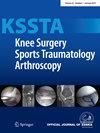Tibial implant varus >3° does not adversely affect outcomes or revision rates in functionally aligned image-based robotic total knee arthroplasty in a minimum of 2-year follow-up
Abstract
Purpose
Functional alignment (FA) aims to restore knee kinematics by balancing laxities and adapting implant positioning. This study evaluates safety and outcomes of >3° varus tibial positioning in patients with varus deformity undergoing robotic-assisted total knee arthroplasty (TKA).
Methods
This retrospective study included 337 patients with varus deformity undergoing robotic-assisted TKA with FA principles with a minimum of 2-year follow-up. Patients were divided into two groups based on tibial varus positioning: ≤3° varus: Group A and >3° varus: Group B. Preoperative and postoperative coronal alignment, implant positioning, and outcomes were assessed using the Knee Society Score (KSS) and the Forgotten Joint Score (FJS) at final follow-up. The primary outcome was implants' survivorship, and secondary outcomes included complication rates and functional scores. Statistical analyses included Mann–Whitney and Chi-square tests for group comparisons, Kaplan–Meier survival analysis for implant survivorship, and multivariate regression for key covariates.
Results
Implant survivorship was 99.4% in Group B over a median follow-up of 30 months, with one revision due to aseptic loosening and 100% in Group A (p = 0.36). The overall complication rates were 12.7% in Group A and 10.2% in B (p = 0.48). The median KSS-knee and function scores were 94.5 and 90 in Group A and 94 and 90 in B (p = 0.88 and 0.8, respectively). The final FJS was 82 in Group A and 84 in B (p = 0.8). No significant differences were observed in postoperative knee range of motion between the two groups. Multivariate regression analysis showed that none of the included covariates were statistically significant predictors of implant failure.
Conclusion
FA in robotic-assisted TKA with tibial positioning >3° varus seems to be safe and reliable in patients with varus deformity, demonstrating similar revision rates, implant survivorship, and outcomes compared to the ≤3° tibial varus group.
Level of Evidence
Level III.




 求助内容:
求助内容: 应助结果提醒方式:
应助结果提醒方式:


